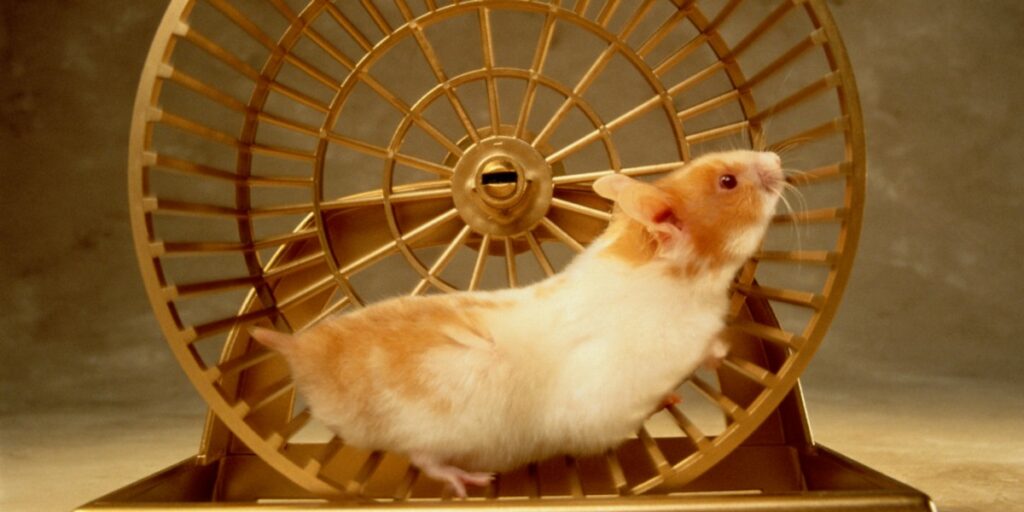A mouse wheel is a device created for hamsters and other rodents to allow these animals to exercise in limited living environments. It was explicitly designed for domesticated hamsters that serve as pets. But did you know that wheels also attract the attention of wild rodents?
Researchers discovered that wild rodents utilized mouse wheels if made available near their natural habitats. They also found that other small animals use the wheel from time to time.
When was the Hamster Wheel Invented?
While there were no references to specific individuals or time frames when the hamster wheel was invented, the earliest account of a technologically advanced version was found in 1969. Kevin Woolfolk was on his stationary bike one night, and as he was recording the mileage of his exercise, he noticed that his hamster, Burt, was also running on his wheel.
Woolfolk was curious about how far Burt was going as he ran on the wheel. He made a prototype mouse wheel that could measure the distance Burt was traveling as he ran on the wheel. It was made of a small magnetic counter purchased from a local store.
Once built, Woolfolk placed the prototype into Burt’s cage and left the hamster to do his nightly runs. Upon waking up, he recorded that Burt ran a total of 23,300 feet, equal to roughly 4.5 miles. Realizing his invention may be beneficial to others, Woolfolk patented it, making him the known inventor of this type of mouse wheel. (Source: The Inventors)
Why Do Rodents Enjoy Running on Wheels?
For decades, hamsters and other domesticated rodents were taught to run on wheels as a result of them being confined to a small enclosure. This eventually developed a neurotic behavior that influenced them to do so. . (Source: Wired)
However, newer research showed that rodents would voluntarily run on an exercise wheel if it was accessible and would do so even in the absence of any form of reward for doing so. Dutch neurophysiologists Johanna H. Meijer and Yuri Robbers of the Leiden University Medical Center conducted the study that proved this hypothesis.
They wanted to determine whether wheel-running is an activity developed by animals in captivity. They built cage-like gadgets that had a mouse wheel in them. The setup was created so that animals could easily enter and exit it. Meijer and Robbers placed these contraptions in a green urban area that was not accessible to the public. They then put a motion sensor programmed to activate a camera with night vision once the wheel is moved. Finally, they put some food near the setup to attract the small animals.
The research lasted three years, and they were able to collect over 200,000 recordings on both sites where the contraptions were set up. They analyzed over 12,000 video fragments that captured different animals using the wheel. The videos showed mice, rats, shrews, frogs, and even slogs getting on the wheel.
While some videos showed that some animals unintentionally moved the wheel, they noticed that most used it intentionally. Some animals would run for a brief period, get off the wheel, and get back on and run some more. This indicated that the activity was done intentionally and not due to domestication and captivity. (Source: Science News)
